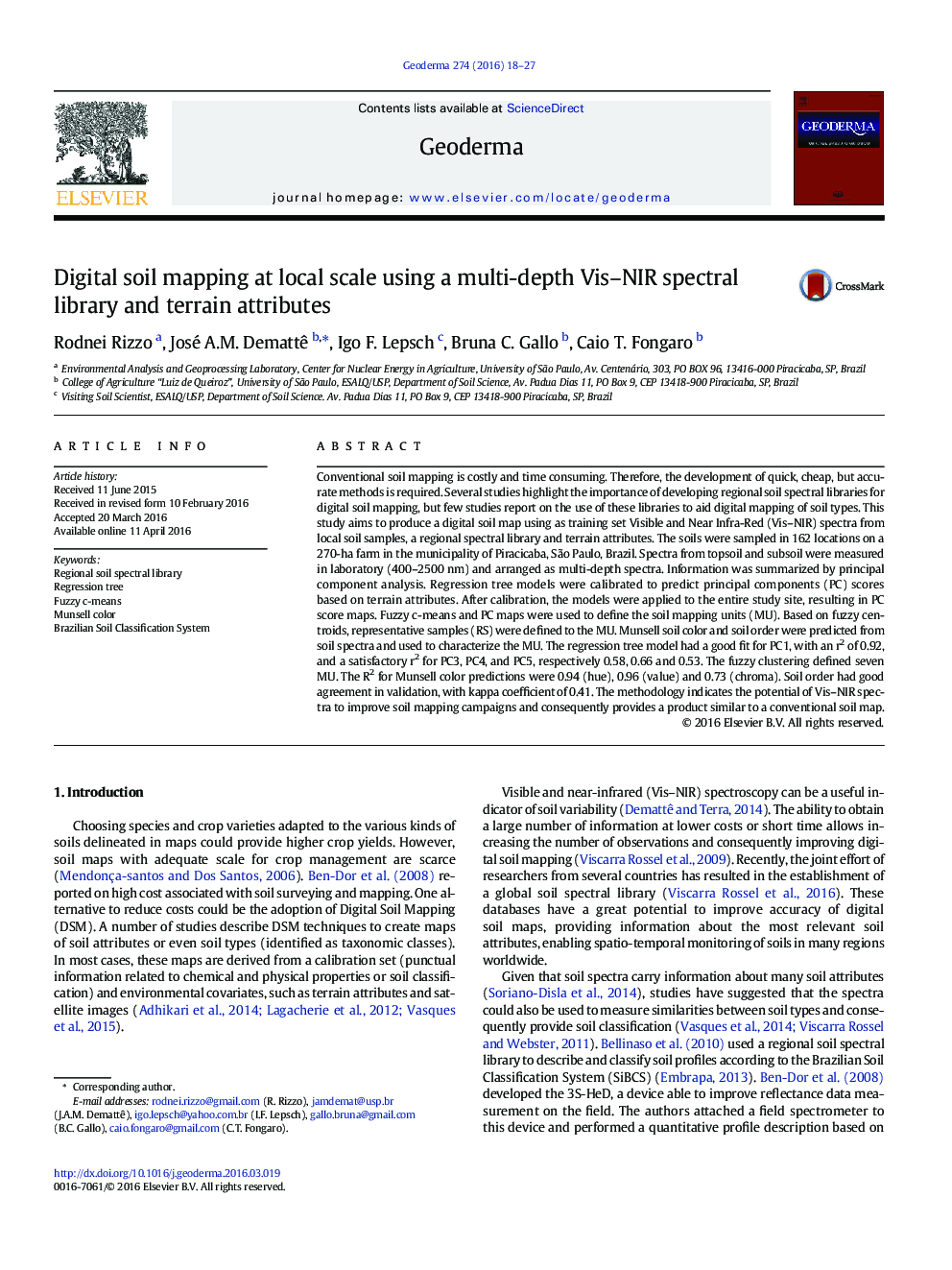| Article ID | Journal | Published Year | Pages | File Type |
|---|---|---|---|---|
| 4572913 | Geoderma | 2016 | 10 Pages |
•Spatial variability of soil multi-depth spectra was predicted based on terrain attributes.•Multi-depth spectral data and fuzzy c-means were used to define soil mapping units (MU).•Local soil samples and MU were characterized employing a regional soil spectral library.•Soil classes were identified and digitally mapped based on proximal Vis–NIR sensing data.
Conventional soil mapping is costly and time consuming. Therefore, the development of quick, cheap, but accurate methods is required. Several studies highlight the importance of developing regional soil spectral libraries for digital soil mapping, but few studies report on the use of these libraries to aid digital mapping of soil types. This study aims to produce a digital soil map using as training set Visible and Near Infra-Red (Vis–NIR) spectra from local soil samples, a regional spectral library and terrain attributes. The soils were sampled in 162 locations on a 270-ha farm in the municipality of Piracicaba, São Paulo, Brazil. Spectra from topsoil and subsoil were measured in laboratory (400–2500 nm) and arranged as multi-depth spectra. Information was summarized by principal component analysis. Regression tree models were calibrated to predict principal components (PC) scores based on terrain attributes. After calibration, the models were applied to the entire study site, resulting in PC score maps. Fuzzy c-means and PC maps were used to define the soil mapping units (MU). Based on fuzzy centroids, representative samples (RS) were defined to the MU. Munsell soil color and soil order were predicted from soil spectra and used to characterize the MU. The regression tree model had a good fit for PC1, with an r2 of 0.92, and a satisfactory r2 for PC3, PC4, and PC5, respectively 0.58, 0.66 and 0.53. The fuzzy clustering defined seven MU. The R2 for Munsell color predictions were 0.94 (hue), 0.96 (value) and 0.73 (chroma). Soil order had good agreement in validation, with kappa coefficient of 0.41. The methodology indicates the potential of Vis–NIR spectra to improve soil mapping campaigns and consequently provides a product similar to a conventional soil map.
